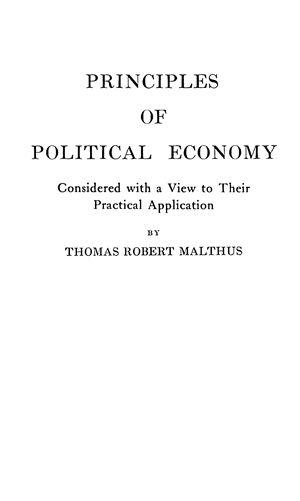
Principles of Political Economy
- Thomas Robert Malthus (author)
The first edition was published in 1820. This is the second edition of 1836. It is one of the major works in the classical school of political economy along with Smith’s Wealth of Nations and Ricardo’s Principles of Political Economy.